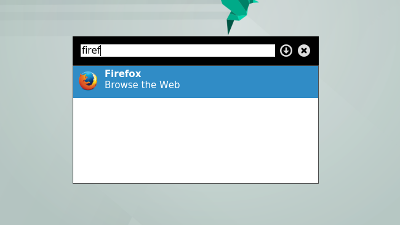* Bumped Standards to 4.1.2, no changes needed * Removed branch from VCS fields * Removed debian/gbp.conf
lxqt-runner
Overview
lxqt-runner provides a GUI that comes up on the desktop and allows for launching applications or shutting down the system.
Technically it consists of a single binary lxqt-runner. The binary is run in a daemon-like manner as so-called LXQt Module and brings up the GUI when a configured keyboard shortcut is hit.
Installation
Compiling source code
Runtime dependencies are muparser, KWindowSystem, menu-cache and lxqt-globalkeys.
Additional build dependencies are CMake and optionally Git to pull latest VCS checkouts. The localization files were outsourced to repository lxqt-l10n so the corresponding dependencies are needed, too. Please refer to this repository's README.md for further information.
Code configuration is handled by CMake. CMake variable CMAKE_INSTALL_PREFIX has to be set to /usr on most operating systems.
To build run make, to install make install which accepts variable DESTDIR as usual.
Binary packages
Official binary packages are provided by all major Linux distributions like Arch Linux, Debian (as of Debian stretch only), Fedora and openSUSE. Just use your package manager to search for string lxqt-runner.
Configuration, Usage
Launching binary lxqt-runner as LXQt Module can be adjusted from section "Basic Settings" in configuration dialogue "LXQt Session Settings" (binary lxqt-config-session) of lxqt-session.
The keyboard shortcut to launch the GUI can be configured in "Global Actions Manager" (binary lxqt-config-globalkeyshortcuts) of lxqt-globalkeys.
The GUI comes with a configuration dialogue to customize settings like the position where it's displayed. It's accessible from a menu that's in turn opened by an icon left of the one to close the GUI, "arrow down" in screenshot above.
To launch an application corresponding strings need to be filed in the form, next a selection can be made from a list presenting matches. Items to shut down or restart the system and so on are provided by the menu featuring the configuration dialogue as well.
